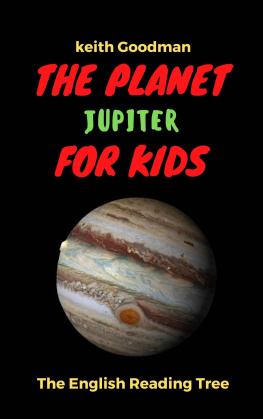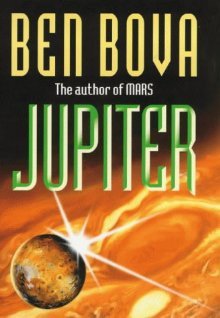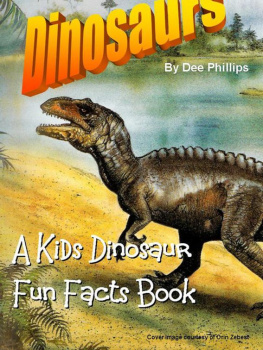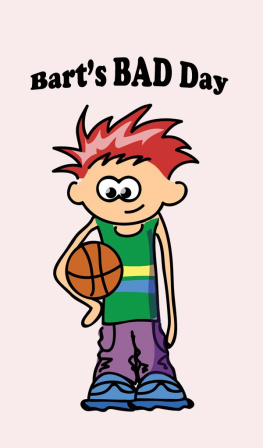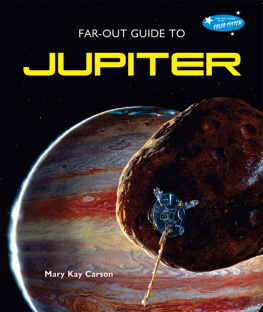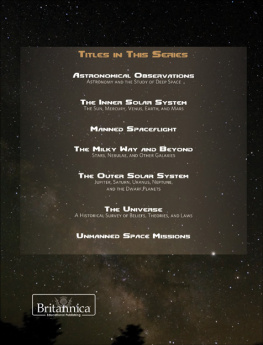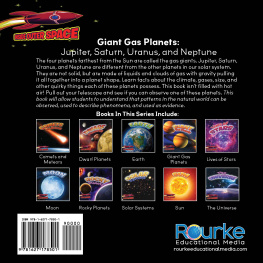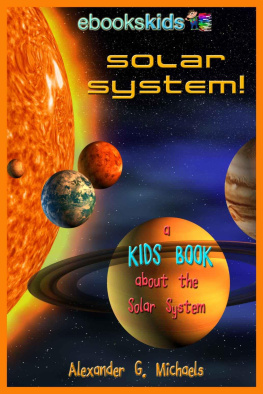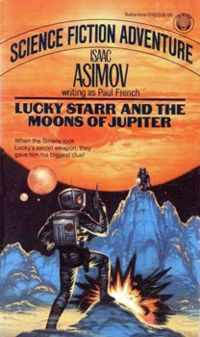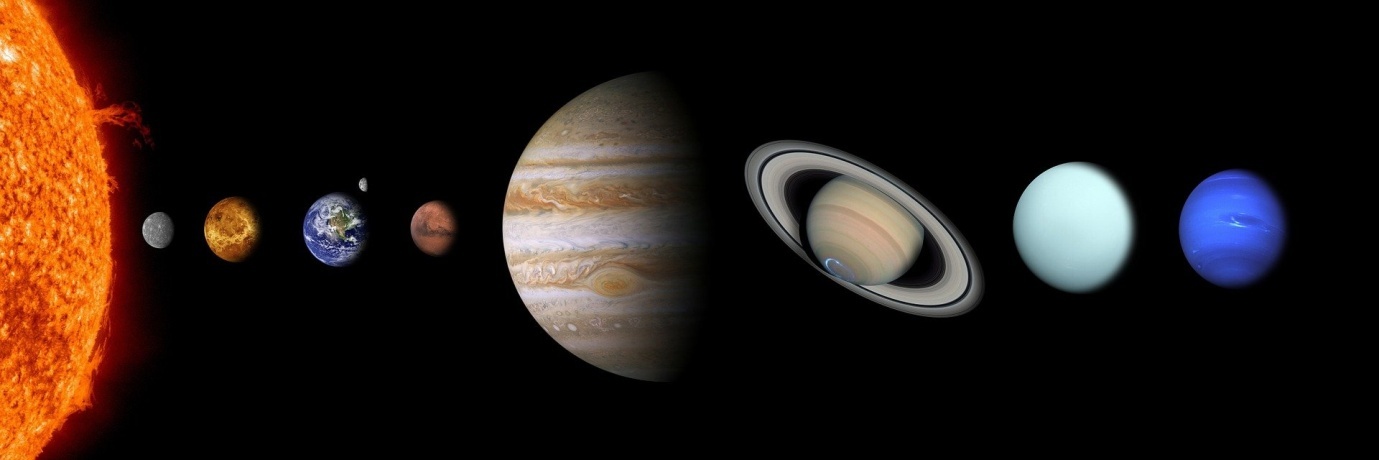The planets in order of distance from the Sun are Mercury, Venus, Earth, Mars, Jupiter, Saturn, Uranus, and Neptune
If you are looking for the biggest planet in our solar system, look no further than Jupiter. The fifth planet from the Sun is around 300 times bigger than Earth. It is named the gas giant. The surface is made of hydrogen gas. Under the gas, the pressure is so intense that the hydrogen becomes liquid and then metal.
Under the gas, there is a core of rock that is similar in size to Earth.
Jupiter has 53 moons that we have given names and about 26 that are awaiting formal names. The biggest is Ganymede, which is larger than Mercury and the biggest moon in our solar system.
If Venus has similarities to Earth, then Jupiter is hugely different. It is a gas planet, so there is no place to stand. It has 79 moons (at least), while we on Earth have just one.
We know Jupiter because it has swirls and stripes that define its appearance. Actually, these are made up of ammonia and water clouds that are floating over an atmosphere made up of helium and hydrogen. There is a vast red spot on Jupiter. This is a storm that is bigger than Earth and has been raging for centuries.
Lets take a closer look at this giant of a planet.
Jupiter Facts
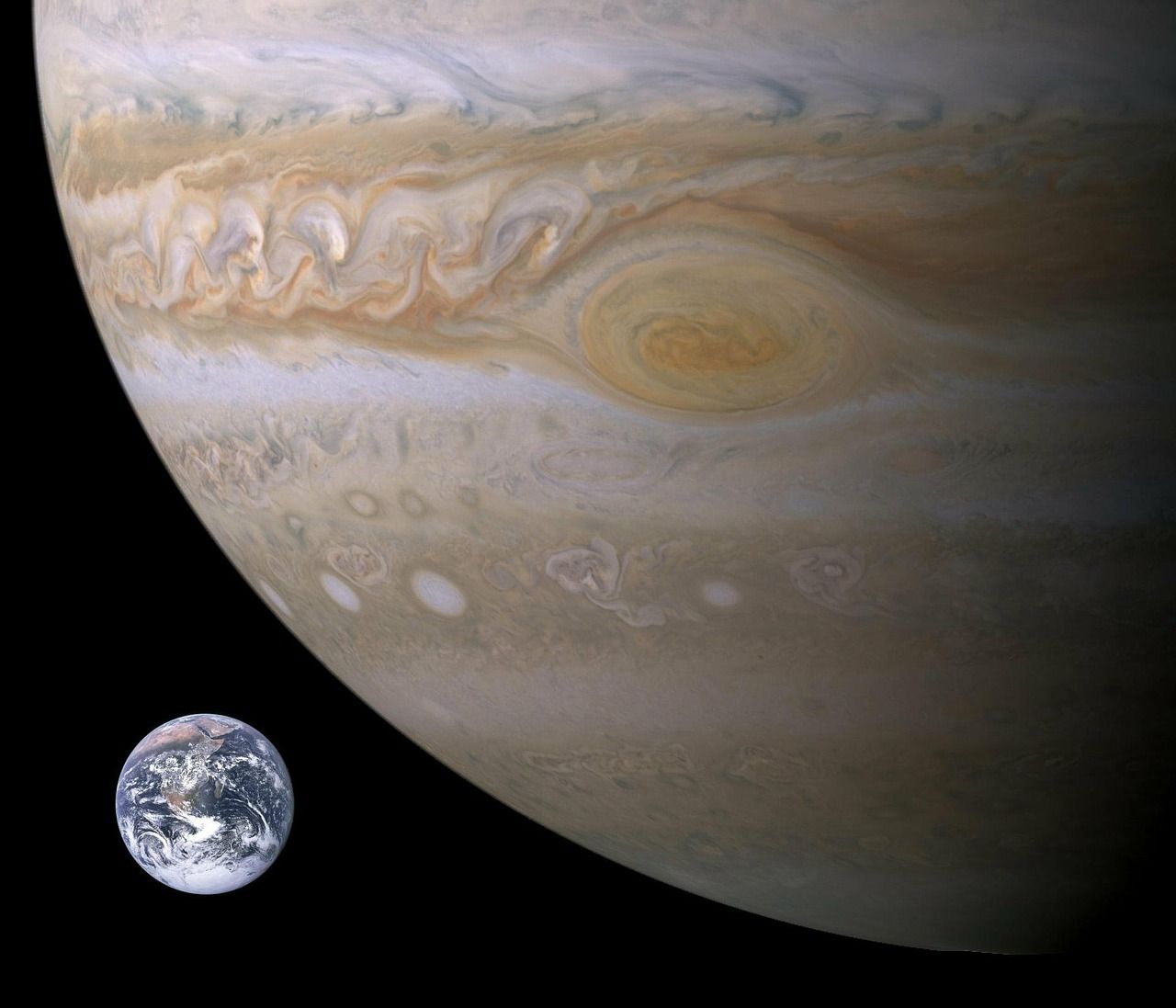
Jupiter, in comparison to Earth
Planet Earth is 93 million miles (151 million km) from the Sun
Jupiter is 484 million miles (778 million km) from the Sun
A year on Earth is 365 days
A year on Jupiter is 4,332 earth days or just under 12 years
Earth goes around the Sun at 18.5 miles a second
Jupiter goes around the Sun at 8.12 miles per second
One day on Planet Earth is 23 hours 56 minutes
One day on Jupiter is 10 hours
To travel around Earth using the equator is a distance of 24,901 miles
To travel around Jupiter using the equator is a distance of 272,942 miles (439,264km)
Jupiter and Earth travel in an elliptical path around the Sun, so the distance apart changes a lot. At its closest, Jupiter is 365 million miles from Earth (588 million km). At its furthest point, Jupiter is 601 Million miles away (968 million km)
An elliptical path is in the shape of an oval. All planets go around the Sun in an elliptical orbit
The average temperature on Planet Earth is 57F (13 degrees Centigrade).
The average temperature on Jupiter is minus 234 degrees Fahrenheit (-145 C)
Earths atmosphere is mainly nitrogen and oxygen.
Jupiters atmosphere is mainly hydrogen with about 10 percent helium. There are traces also of sulfur, ammonia, methane, and water vapor
Earth has one moon
Jupiter has about 79 moons
On Jupiter, the gravity is stronger than that on Earth. Surface gravity is 2.4 times that of Earth. If you weigh a hundred pounds here on Earth, you would weigh two-hundred and forty pounds on the planet Jupiter.
What is the Weather Like on Jupiter?
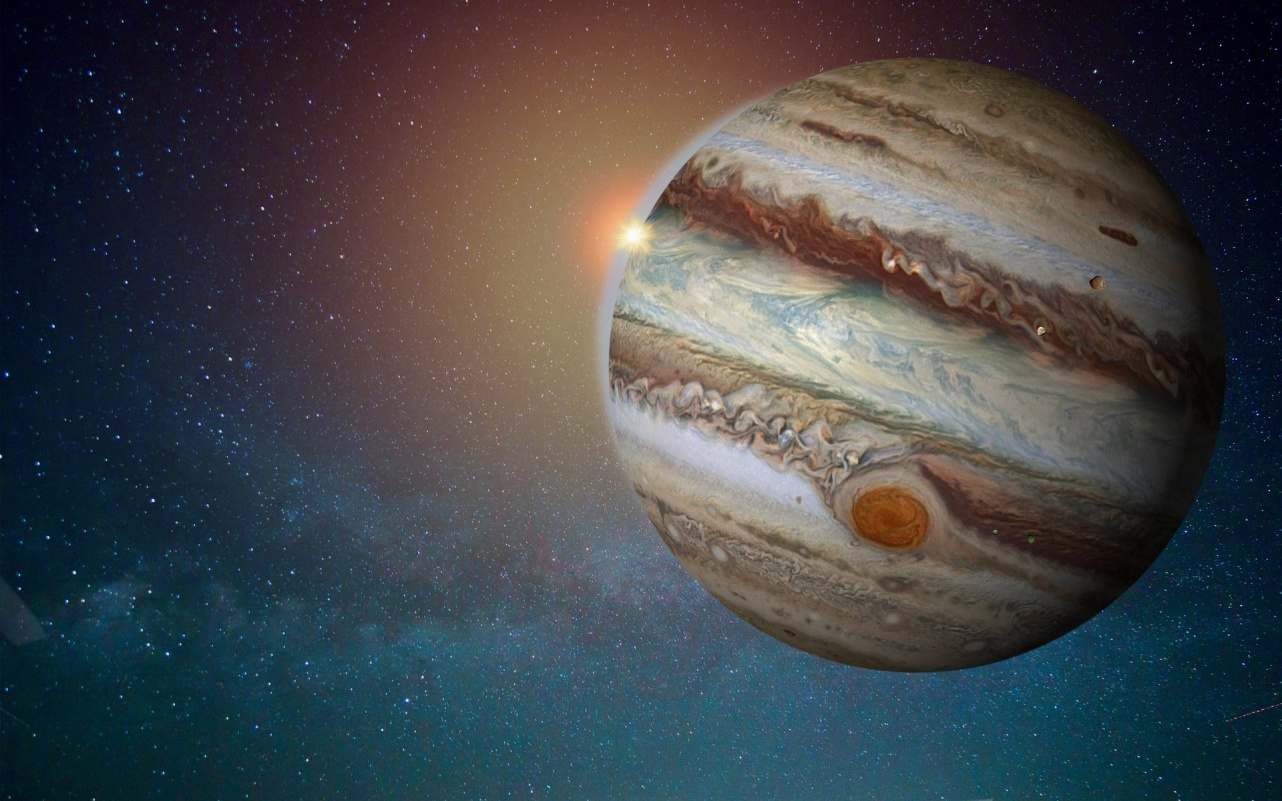
There are very extreme weather patterns on Jupiter, and incredibly, the planet can have storms that can span thousands of miles that can spring up in a couple of hours.
The planet has lighting and windstorms as well as auroras. The weather on Jupiter is so extreme it can be seen from space.
An aurora is a natural phenomenon that also happens on Earth (aurora borealis). An aurora displays colored lights in the sky due to electrically charged sun particles colliding with gases such as nitrogen, which is in abundance on Jupiter.
So, basically, this planet is a turbulent, stormy whirlpool of strong wind with a powerful gravity pull. There is a red spot that is bigger than Earth and is the largest and longest storm in our solar system. There are wind speeds in excess of 200 miles an hour that have been blowing for at least 350 years.
The weather on Jupiter is not dissimilar to Earth, although the auroras on Jupiter are far more intense and happen continuously. With lightning storms, high winds, and auroras in the southern and northern polar regions, the big difference between Earths weather and Jupiters comes down to size. Jupiter is massive, so the scale of weather conditions are incredibly extreme.
Missions to Jupiter
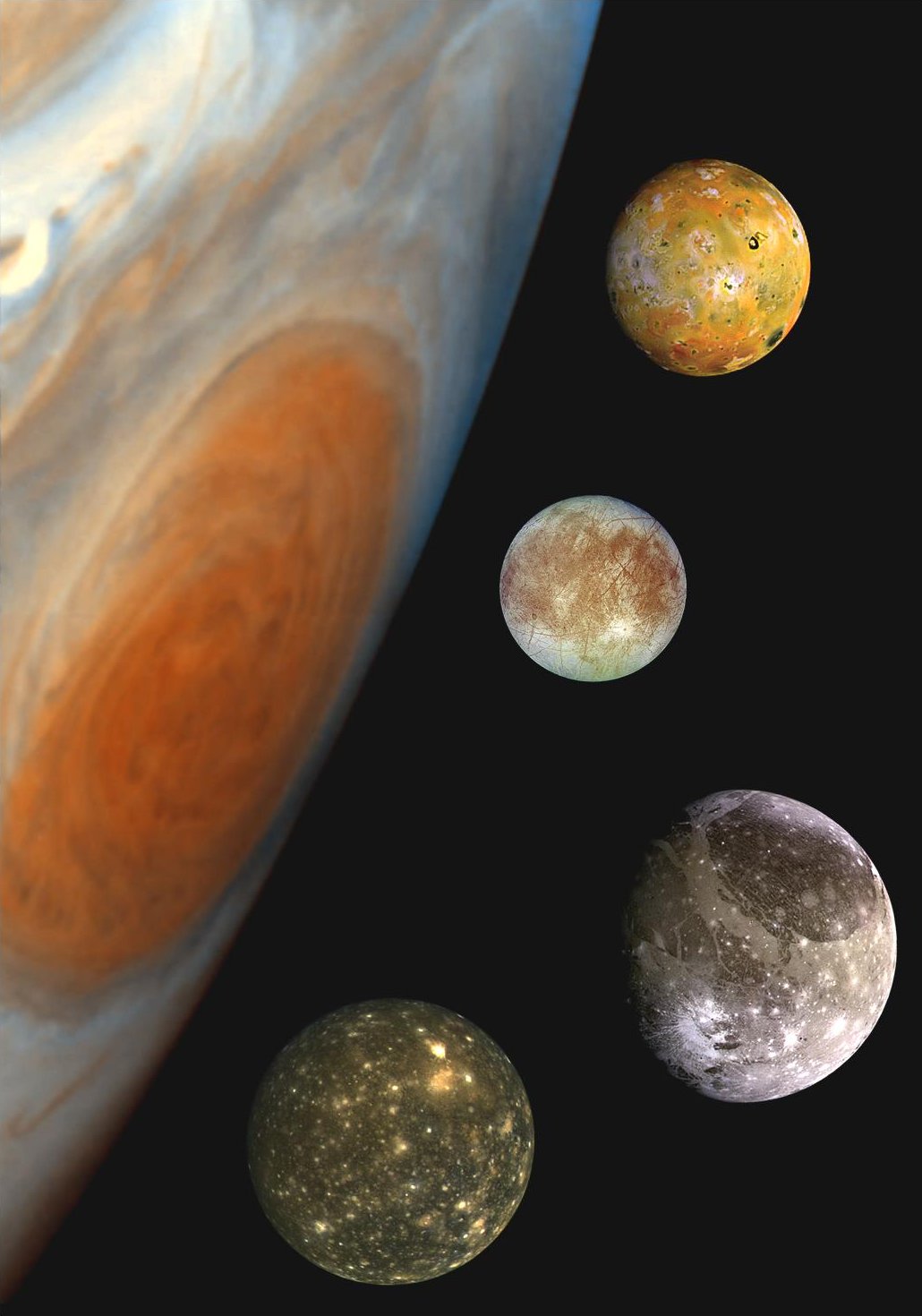
Jupiter with the Great Red Spot and its four Galilean Moons from top to bottom Io, Europa, Ganymede, and Callisto
Our ancient ancestors discovered the planet Jupiter, but the first person to give a detailed observation account was Galileo Galilei. He did this in 1610 with the use of a primitive telescope.
In recent years, spacecraft have been sent to explore Jupiter, so we know a great deal about the planet and its many moons.
Pioneer 10 flew past Jupiter in 1973, and eleven months later, Pioneer 11 made the trip. From these missions, scientists got close-up pictures of the planet and its moons and information on its magnetic field. Pioneer 11 flew closer to Jupiter and sent back terrific images of its Great Red Spot, and examined the planets Polar Regions.
In 1979, it was the turn of Voyager 1 and Voyager 2 to send back information. These missions discovered that Jupiter had faint rings made up of dust particles. The Voyager missions also gave us close-up images of the atmosphere of Venus and showed just how big and complex was the storm that was raging in the area we know as the Great Red Spot. An unexpected revelation discovered by the Voyagers was volcanic activity on the Jupiter moon, Io.
The Galileo orbiter (1995 2003) was the first spacecraft to orbit Jupiter. It made 35 orbits of this massive planet in 7 years. A lot of information was sent back to Earth from this mission. This included:
- The observation of clouds of ammonia and ammonia ice particles in Jupiters atmosphere.
- Confirmation of volcanic activity on Io, which is 100 times more violent than that on Earth.
- Evidence that there are liquid oceans on the Jupiter moon, Europa.
- Evidence of a magnetic field around the Jupiter moon, Ganymede.
- Information on the dust particles in the Jupiter rings.

